Dee Estuary Birding
Monthly Newsletter...
July 2021 Newsletter
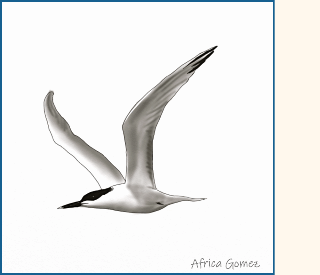
Hoylake Beach
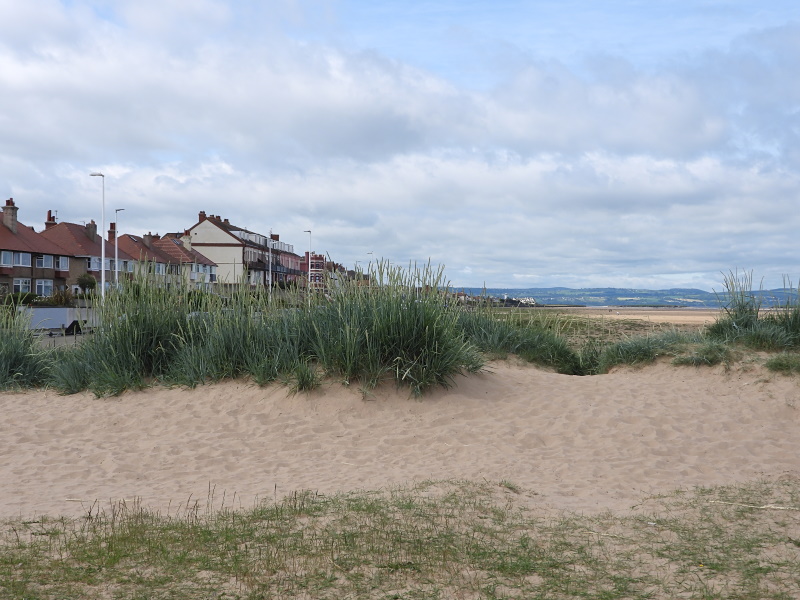
In order to counter some of the antagonism towards and the
misinformation about the growth of the embryo salt marsh
and proto sand dunes on Hoylake Beach the following article has been
written, and also some very informative posters published (also
below). I
should also add that Hoylake Shore (along with the rest of North Wirral
Shore and the Dee Estuary) is a highly protected site being a SSSI
(Site of Special Scientific Interest), SAC (Special Area of
Conservation), SPA (Special Protection Area) and Ramsar Site - which
makes it one of the most highly protected sites for Nature in the
country:
Hoylake Beach
This article is
written by Cheshire Wildlife Trust and its local group Wirral Wildlife,
using the guidance issued to Wirral Borough Council by Natural England,
and with further advice on geomorphology, sediment accretion and
estuarine habitats from coastal experts who know Wirral. Coastal change
is natural; we are fortunate that here it is providing new habitat to
help tackle the climate, environmental and well-being emergencies we
face.
During the last ice age, Wirral was under a thick layer of ice. This
gouged out the Dee Estuary and pressed down our part of the earth's
crust. Since the ice melted about 10,000 years ago, the Dee Estuary has
been slowly filling up with nutrient-rich sand and mud, known as
sediment. The sediment comes mostly from the sea, by longshore drift
along the North Wales coast. It is this accumulated sediment that makes
the Wirral shores internationally important for nature conservation. It
is full of worms, snails, crabs and other invertebrates. On these feed
the thousands of birds which winter here, which would not be able to
survive without this rich food.
The seabeds of the Dee and Mersey estuaries also store lots of carbon
that has been absorbed over thousands of years, sealed underwater. If
disturbed, this carbon is released, making our climate warmer and our
seas more acidic. Readers will know about the effects of the climate
emergency and current efforts to tackle it through the COP26
conference: we are part of nature, not separate from it. Salt marsh is
one of the best habitats at taking carbon dioxide out of the
atmosphere, on a par with peatlands and woodlands. (See Natural England
report cited at end).
Sea levels have fluctuated widely since the last ice age and are
currently rising as a result of increasing sea temperatures. Our piece
of crust has been slowly coming up again since the weight of ice was
removed, so the net sea level rise at Liverpool is currently about 5mm
a year - which does not sound much until it is added up over a century
and more. Our coasts are dynamic places, always changing. For the last
century many of our coasts have been "frozen" in place by coastal
defences. Can and should this be continued?
To help answer this, the national government has put in place a
Shoreline Management Plan (SMP), about which there were local public
meetings in 2012. Rev. Paul Rooney, Head of Geography and Environmental
Science at Liverpool Hope University tells us that there has been a
"tectonic change" in knowledge of coastal processes in the last 20
years - but we still cannot accurately predict the future from the
past.
So what about Hoylake? The SMP decision for North Wirral, made by
national experts, is to "hold the line" i.e. maintain the existing hard
defences for at least 50 years from when the plan was made. After that
defences may be removed at Leasowe Bay and natural sand dunes
encouraged to take over. The SMP principle is to work with nature - but
Liverpool Bay is not entirely natural, being affected by the
canalisation of the Dee and Mersey and the dredging of the Liverpool
Port approaches for shipping. At Hoylake, the energy of the water and
sediment supply are key. The Hoyle Lake is now full of sediment. Hilbre
and the East Hoyle Bank break some of the energy of the waves, tides
and currents. So sand and some mud is being deposited on Hoylake shore,
raising its level to the point where it provides excellent conditions
for specialist plants. The colonisation by coastal plants is the
result. Sand dunes are wonderful habitats for a suite of fascinating
plants which we need to respect and which provide us with service by
holding the sand together, so less blows inland. An on-going study of
Hoylake shore by an expert professional botanist (Joshua Styles) has so
far (by spring 2021) recorded 110 plant species, including twelve rare
and unusual ones of at least regional significance. Spartina
(Cord-grass) occupies much less than 5% of the vegetated area. All the
species are native to the UK. Most of the species are now those
characteristic of sand dune rather than salt marsh. This excellent
collection has arrived naturally, because the shore provides the
correct environment for their needs. This special and natural
environment we now have on our shore is why every time the vegetation
has been sprayed or scraped off, it returns. Natural England opinion
(see guidance) is that at Hoylake the balance would be more towards
sand dune than salt marsh, but detailed studies are needed to test
this. These have now been commissioned by Wirral Borough Council.
In 2000, a report by Dr Alan Jemmett (then Dee Estuary Conservation
Officer, now head of Merseyside Environmental Advisory Service) looked
at the Hoylake foreshore and did a report to Wirral BC, which judged
the continued removal of vegetation to be "unsustainable" on ecological
and financial grounds. With money needed for other matters, surely we
should embrace the natural opportunity that has developed on our coast.
At Parkgate, well up the Dee where there is less movement of waves,
mostly mud was deposited, leading to permanent salt marsh. In contrast,
Red Rocks Nature Reserve, round the corner from Hoylake shore, has been
allowed to develop fairly naturally for the last twenty years. Here a
new salt marsh, reed-marsh and sand-dune line have formed and are still
increasing. In these new habitats natterjack toads sing, rare moths
breed and much other wildlife is flourishing. Rats, mosquitoes and
cord-grass are not problems at Red Rocks. West Kirby beach by the
Sailing Centre is kept clear of plants by mechanical methods.
The best comparison to Hoylake, because it likewise faces Liverpool
Bay, is in Sefton, all the way from Birkdale to Marshside, where
coastal sediment has formed wildlife-rich new habitats. At Southport an
amenity beach is kept as sand. We encourage you to walk along this
shore and enjoy the wildlife.
North Wirral foreshore is internationally important for wintering
birds, with many thousands there every year. How would development of
salt marsh and sand dune affect them? Developing saltmarsh and sand
dune would slightly reduce the feeding ground for the wading birds. The
RSPB does not think the loss is significant, given the large amount of
inter-tidal habitat available. The new salt marsh and sand dune could
provide more roosting places at high tide. This would be valuable space
for the birds, which have few places to go because of urban development
round the Dee. We can help the resting birds by keeping ourselves, our
dogs and our horses from disturbing the birds at high tide in autumn
and winter.
The previous agreement between Natural England and Wirral Borough
Council on the beach management has finished. In 2019 Wirral Borough
Council declared an Environmental and Climate Emergency, as have many
other local and national bodies. In the last few years, new evidence on
the effects of the weed-killer formerly used on the beach (glyphosate)
has emerged. It has been shown to reduce invertebrate populations,
including those in the beach sediments. These invertebrates are the
food supply for the wintering birds. The guidance of the Government’s
ecological advisor, Natural England, is now in favour of letting nature
take its course (see their guidance to Wirral Borough Council). They do
allow the possibility of creating a limited amenity beach, as at West
Kirby, using mechanical means.
Money is tight - is our money best used making the climate and
environmental emergencies worse? Or could it be used to manage the
natural sediments, keeping open sand where an amenity beach is needed
and access for RNLI? Wirral Borough Council has at long last agreed to
have a proper scientific investigation done, as Dr Jemmett recommended
two decades back, to model what would develop naturally on this
beach.
Look ahead 50-100 years. Sea level will continue to rise. Dunes and
saltmarsh would protect the sea wall. What would our grandchildren want
us to do?
For all these reasons, we should allow nature to take its course on
Hoylake shore. We are very lucky to have more coastal wildlife able to
thrive in our peninsula. New coastal habitat is a rarity in the UK and
we should celebrate it.
Our mission, as Cheshire Wildlife
Trust, is to bring wildlife back. We want to see more and
better-connected wild spaces and the pressures on the environment
reduced, and we work to improve the resilience of nature and restore
broken ecosystems. We also believe that people’s wellbeing and the
economy relies on a healthy, natural environment. Coastal processes are
changing the beach at Hoylake and increasing the diversity of wildlife
found there. There needs to be more understanding of the coastal
change, habitat development and the value that this brings, and we are
in favour of further studies to help achieve this. Hoylake beach is
designated for nature conservation as a Site of Special Scientific
Interest. As such, any management of the beach requires the written
agreement of Natural England.
Wirral Wildlife committee
Cheshire Wildlife Trust
References/Further Reading
Shoreline Management Plan - www.mycoastline.org.uk
Wirral Coastal Strategy - https://democracy.wirral.gov.uk/ieDecisionDetails.aspx?AIId=23409
A Jemmett and T Smith, The Beaches at West Kirby and Hoylake, Options
for Managing Wind blown Sand and Habitat Change, Jan 2000. Click Here To Download Report (PDF file).
Natural England Research Report NERR094 'Carbon Storage and
Sequestration By Habitat: A Review of the Evidence' (second edition): http://publications.naturalengland.org.uk/publication/5419124441481216
https://www.wirral.gov.uk/leisure-parks-and-events/beaches-and-countryside/hoylake-beach-management
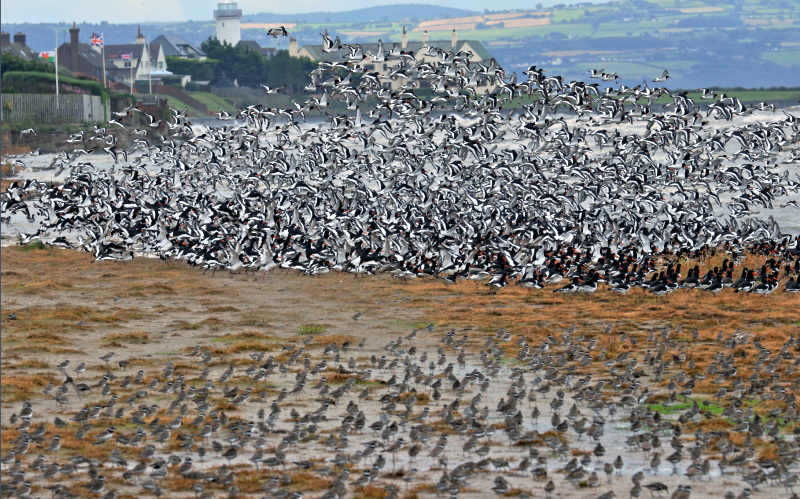
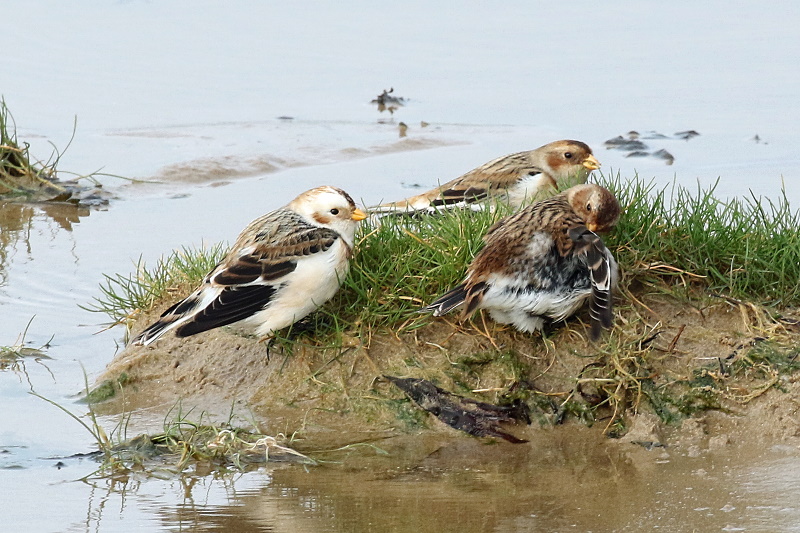
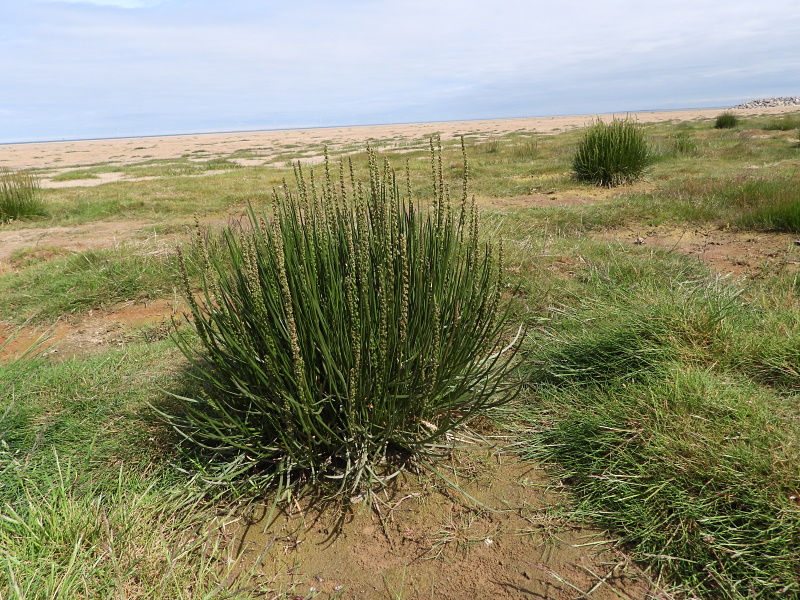
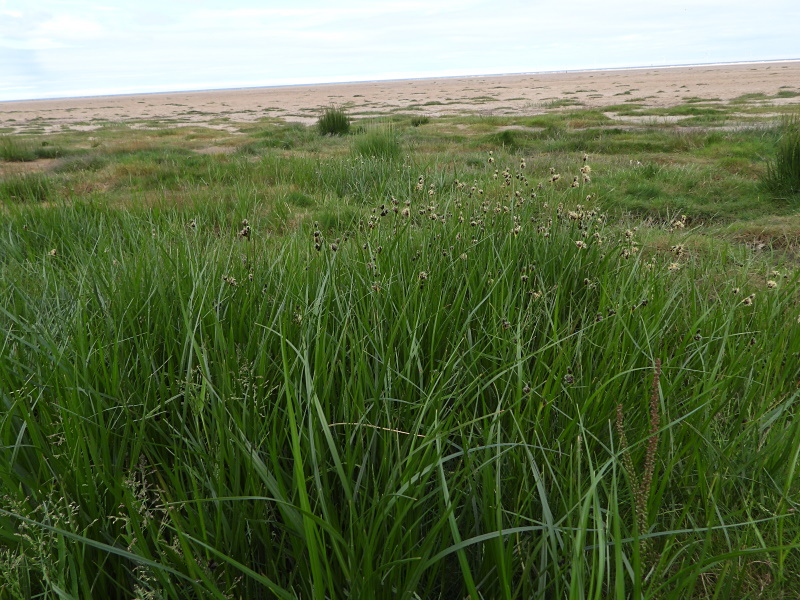
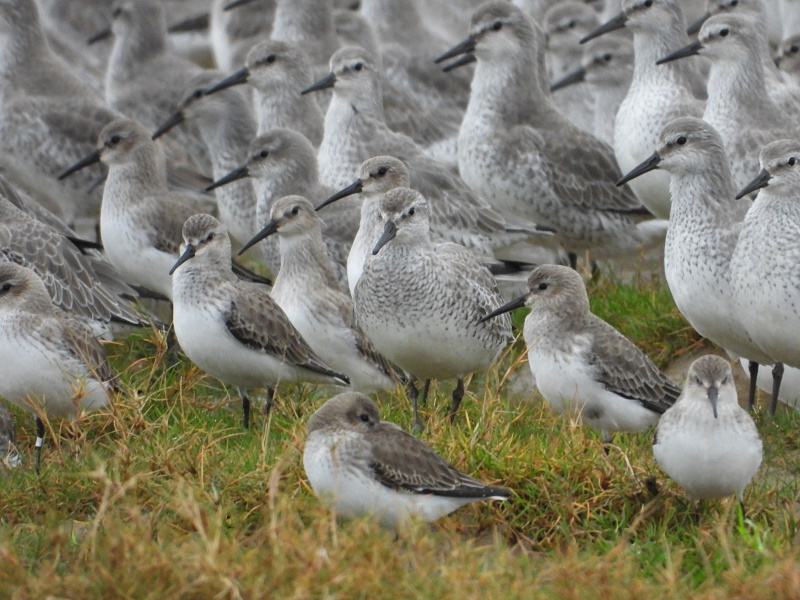
There is an awful lot of mis-information and misunderstanding out there, especially on social media, so to try and rectify that and to bring some balance to the debate Jane Turner has produced these three posters below:
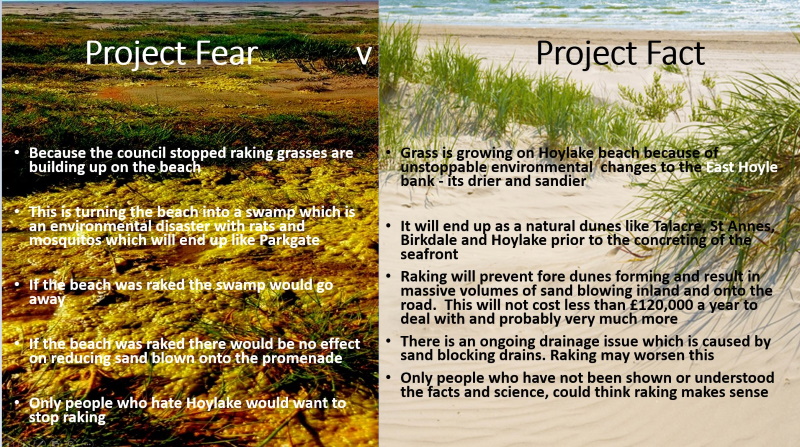
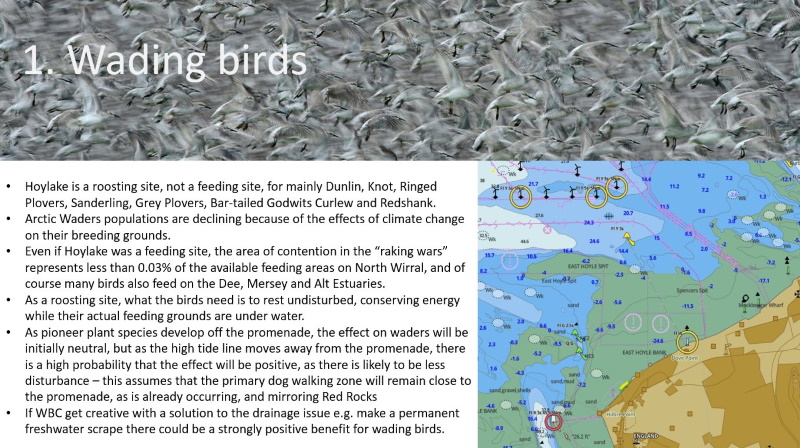
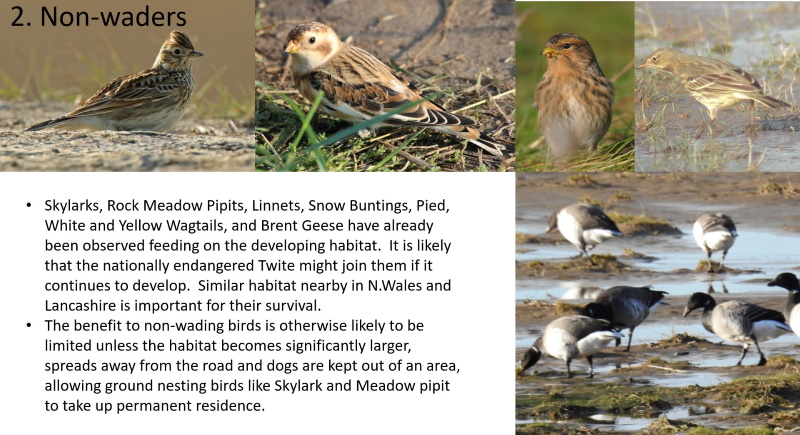
June Bird News

A male Red-backed Shrike was undoubtedly the bird of the month, turning up at Leasowe on the 1st, it was present all day so plenty got to see it. The last Red-backed Shrike we had was a juvenile at nearby Park Lane, Meols, in September 2015.
A 'huge' tern flying west past Hoylake on the 26th
was probably a Caspian but unfortunately it wasn't possible to get a
clear view of it, we've only ever had one Caspian Tern before on the
Dee Estuary, that was off Hilbre in 1986.
Good weather throughout the month meant that our
tern colonies are doing well. Many Little Tern chicks have now hatched
at Gronant and there were reckoned to be at least 200 nests, which is a
record high and more than twice last year's total. I'm not quite sure
how the Little Terns at Point of Ayr are doing but I did hear there
were around 18 nests early in the month, similar to last year. At
Shotton there are 381 Common Tern nests, just above the five year
average of 374.
It was great to confirm that there were a pair of Bitterns at Burton Mere Wetlands and they appeared to be feeding young, fantastic news. Three pairs of Great Egrets have bred there producing 10 young. A recently fledged Marsh Harrier was spotted on the 27th, so they likely bred either on the reserve or nearby. A survey of breeding waders came up with a record numbers of Redshanks. Also at Burton Mere Wetlands were a couple of Curlew Sandpipers on the 2nd, presumably on their way north, seven spoonbills and a female Garganey. The waders started to return by mid-month with a Little Ringed Plover arriving on the 15th and the first Spotted Redshank by the 21st, the latter had increased to seven by the month-end. Two Red Kites were seen over the reserve on a couple of dates with several records elsewhere.
Sea-watching was quiet but 61 Manx Shearwaters flew past Hilbre on the 25th during a fresh breeze. On the 21st 61 Sandwich Terns were there and a large numbers of gulls scattered over the sand banks - mostly Herring Gulls. At least one Eider was present all month with three on the 6th, on the same day an Arctic Skua flew past Red Rocks.
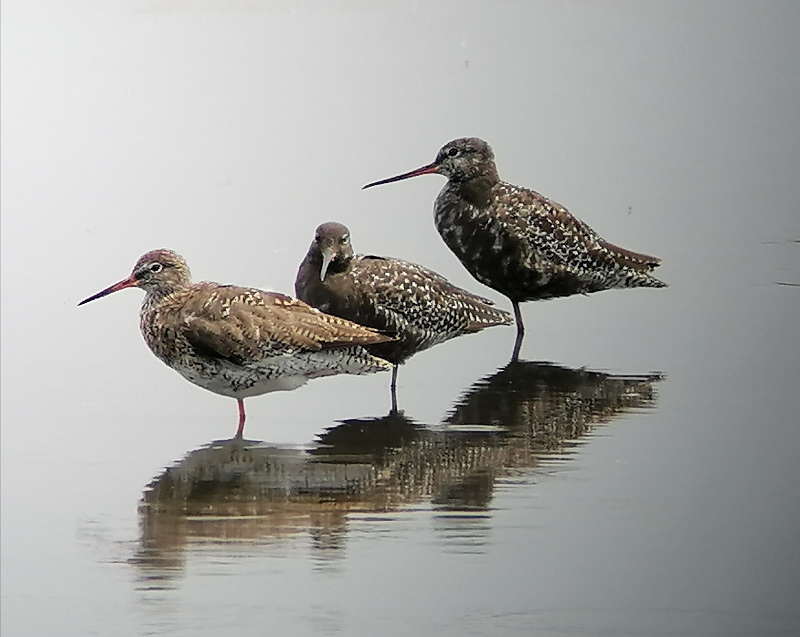
What to expect in July
July is all about birds returning after breeding.
Sandwich Terns will fill the outer regions of the estuary with their
loud cries with the shallow waters an ideal spot for both the adults
and young to stop over for a few weeks before the long journey south,
and we know from ringing that some of them fly as far south as Cape
Town.
July is also a good month to see Mediterranean Gulls many of which will
still be in full breeding plumage, and there will be plenty of the more
commoner species of gulls to see. All this gull and tern activity will
undoubtedly attract Arctic Skuas, one or two can usually be spotted out
in Liverpool Bay but sometimes they can turn up in the estuary itself
even as far up river as Heswall.
With Little Terns still breeding we don't really
want any strong westerly winds washing waves over nests, but if we do
we can get some impressive passages of Gannets and Manx Shearwaters,
and perhaps one or two Storm Petrels.
Wader numbers will increase rapidly and I always look forward to seeing the Black-tailed Godwits in their field in Caldy looking glorious in full summer plumage. There will also be plenty of Redshank and Dunlin as well as scarcer waders such as Little Ringed Plovers and Wood Sandpipers, Whimbrels will also be coming through.
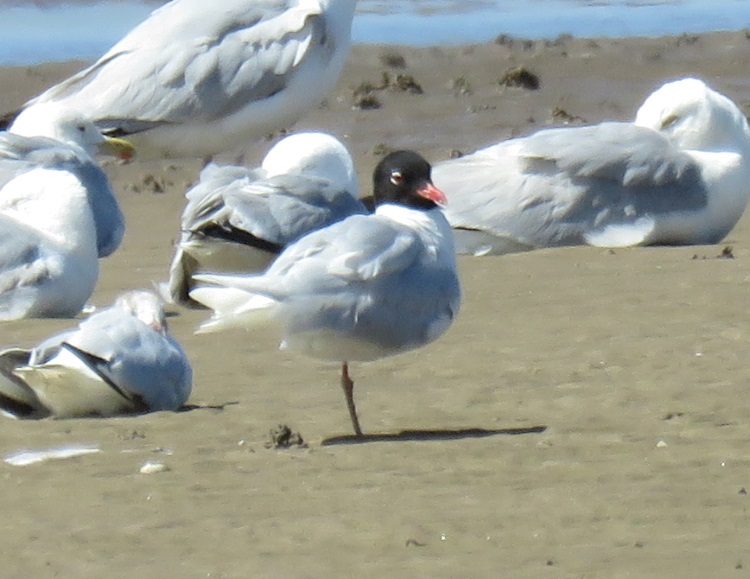
Forthcoming Events
July Highest Spring Tides (Liverpool)
Also see Tides page.
24th July, 12.08hrs (BST), 9.1m.
25th July, 12.56hrs (BST), 9.2m.
26th July, 13.40hrs (BST), 9.1m.